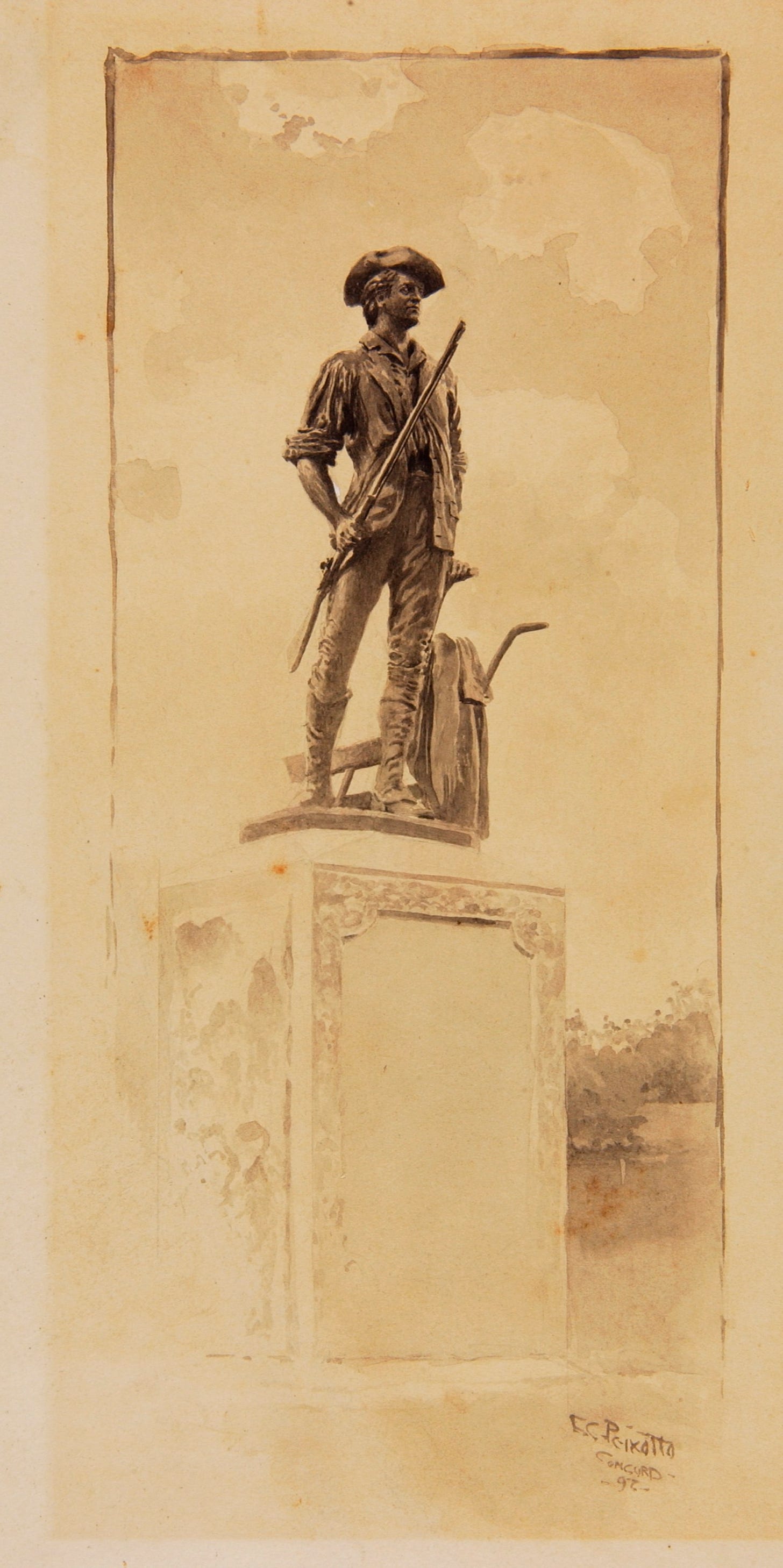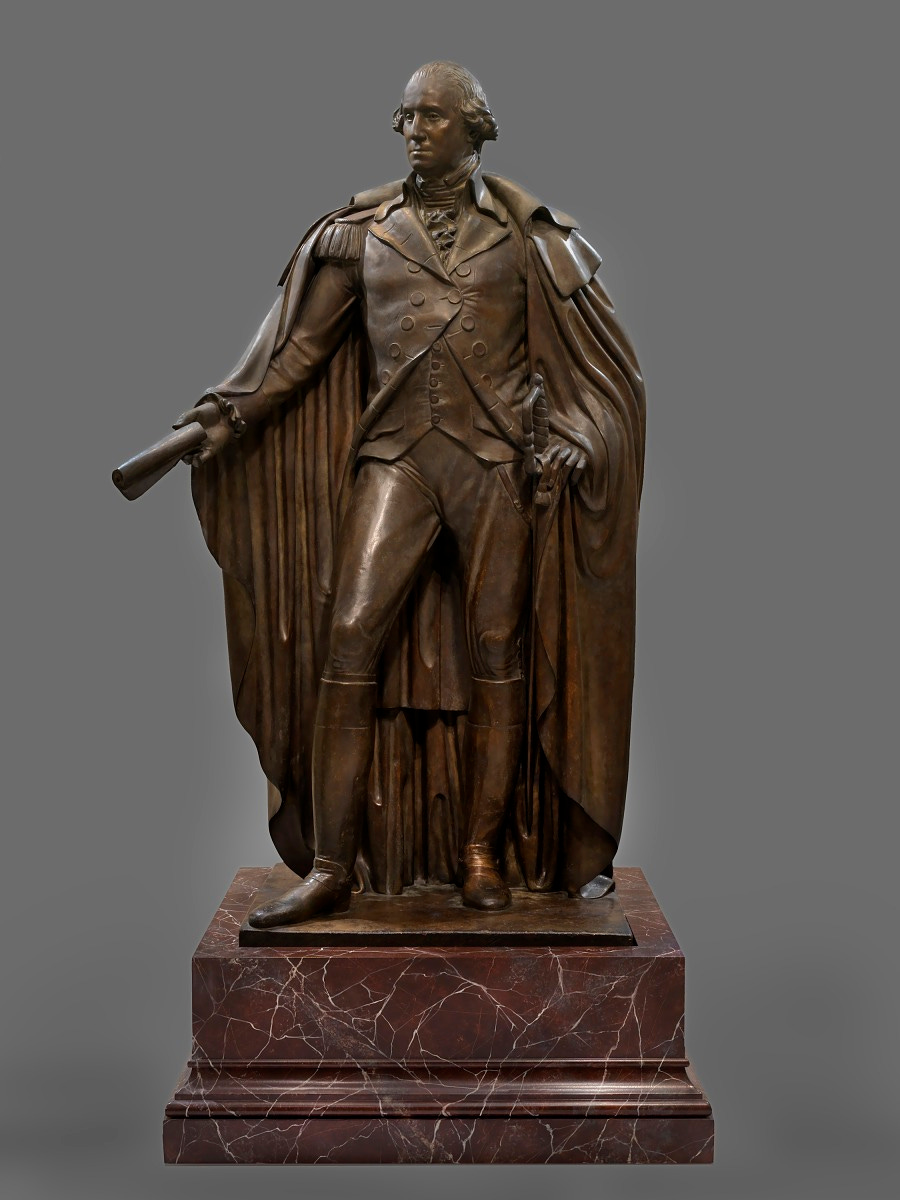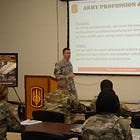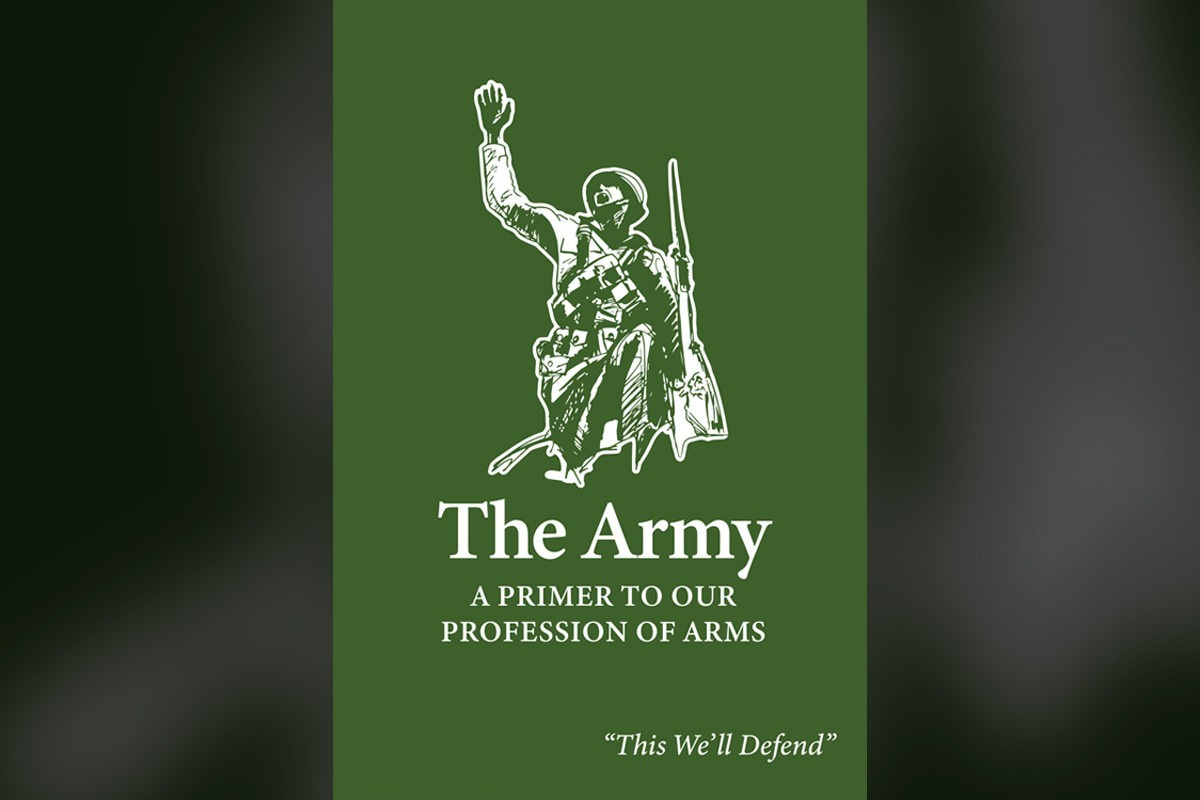What It Means to be an American Civilian
Do we need an FM-1 for civilians?
At first glance, the term “civilian” appears a lightweight. It lacks the symbolic and narrative power packed by its etymological cousins “civilization” and “citizen”. It is an identity most commonly defined and used in the negative, describing people who are not members of any military or armed group.1 Yet, appearances can be deceiving. Perhaps civilian has the potential to be a heavyweight.
This possibility can be glimpsed with the Army. In May 2025, the Army released Field Manual 1 (FM-1), The Army: A Primer to Our Profession of Arms. This publication is intended for young Army leaders, to help inculcate them in the story of the Army, its purpose, identity, values, roles, and responsibilities. FM-1 also communicates to the reader their part in the story, weaving together a series of real-world examples that speak to the range of roles and leaders found in the Army: Lieutenant Colonel Hal Moore and Sergeant Major Basil Plumley commanding their battalion through the Ia Drang Valley in Vietnam, Specialist Salvatore ‘Sal’ Giunta leading his soldiers through an L-shaped ambush in the Korengal Valley in Afghanistan, Sergeant Leigh Ann Hester fighting through an ambush near Salman Pak, Iraq, and many others. It is a powerful identify-forming document. But it is directed only at members of the Army.
Could there be an FM-1 equivalent for civilians? Could we create a document that tells a story and offers a suite of values and responsibilities that American civilians should uphold with how they orient towards and engage with the military? Could such a document have any impact on improving the quality of discourse and national-security decision-making in the country?
It’s possible that the answer to any or all of these questions is no. But we are a nation where the military ultimately reports to civilians. This makes the question of what it means to be a civilian a matter of life and death. As such, however improbable an FM-1 for civilians might seem, it could be an endeavor worth pursuing.
Minute Man Monument. Source: Smithsonian.
Citizen-Soldiers to Civilians and Soldiers
We start with first principles given to us by George Washington. First, American soldiers and civilians are both citizens.2 “When we assumed the soldier, we did not lay aside the citizen…” This sentiment, which Washington first said in 1775, has held true for the entirety of our nation’s history. It creates a common identity that binds together all Americans, regardless on one’s direct connection to the military.
Second, civilians control the military. Washington established this principle with how he commanded the Army during the Revolutionary War, reinforced it in how he ended the Newburgh Conspiracy, and brought it home when he resigned his commission in December 1783. This principle was subsequently codified in the Constitution (which also distributes military authority between Congress and the Executive) and statutes.
Washington Resigning His Commission by Ferdinand Pettrich. Source: Smithsonian.
For much of the nation’s history it was the identity of “soldier” that suffered from underemphasis. Concerned about the potential for permanent armies to undermine the new republic, America’s founding generations deliberately kept the Army (and Navy and Marines) small. National security relied on “citizen-soldiers” who mobilized as individuals or militias during periods of acute crisis.3 Although the professional military grew more robust over the 19th and 20th centuries, America still relied on surging forces via drafts or volunteers up through the Vietnam War.
But in 1973, America transitioned to an All-Volunteer Force and created a new, fundamental distinction between civilian and soldier. Since then, although American men ages 18-25 have continued to register for the draft (selective service), experiences of and expectations for military service have shifted dramatically.
On the one hand, the military has grown significantly more professional. FM-1 is just the latest example of how the Army intentionally seeks to inculcate a strong professional identity. Comparable efforts are found across the military. (For more on the Army’s professionalization journey, see this piece from last year.)
On the other hand, most civilians have grown more detached from the military and the idea of military service. A recent survey found that if a world war were to break out that involved the U.S., only 15 percent of Americans say they would volunteer or serve if called; 13 percent said they would not volunteer and refuse to serve if called up; and 60 percent said they did not believe the military would want them to serve (age, physical or medical factors, etc.). While it’s impossible to realistically measure how people would react to a future war, the data indicates the extent to which many Americans feel no responsibility for military service.4
There is nothing inherently wrong with Americans assuming a professional force bears responsibility for fighting wars, provided civilians still see clear roles to play in the national security system.5 A nation’s strength is only partially captured with conventional measures that look at defense spending, sizes of forces, technological capabilities, etc. It matters a great deal how a society determines to wage war and how it responds to crisis, adapts as conflicts unfold, and manages the transitions of those who serve. In these determinations, civilians have enormous influence and impact. Put differently, if we could create a truly comprehensive measure of national power, we would see that so much of our strength (or weakness) ultimately depends on roles that only civilians can play.
These roles are clearest for civilians within government (e.g., elected or appointed officials and defense department civil servants) or who work in the defense industry. But ordinary civilians also have important roles. Civilians can have an impact through voting and corresponding with elected leaders, for example, or through serving on things such as Selective Service boards. Civilians decide what military educational content schools offer and whether and how programs such as ROTC and JROTC are offered. They can engage with local veteran and military family groups in civil society efforts. The list goes on and includes responsibilities that are universally applicable, such as staying informed on military affairs.
But as civilians, do we see these roles? Do we know what it looks like to uphold these responsibilities? Or could we use a playbook, an FM-1 equivalent?
FM-1. Source: Army.mil.
FM-1 for Civilians
First things first, what an FM-1 for civilians would not be. It would not be a legal document. The identity of civilian does not confer any additional legal obligations beyond those required of citizen. Nor should an FM-1 for civilians come from the military or any government agency. Any such top-down effort would almost certainly fail. The most productive pathway would be harness civil-society and engage Americans at the local level.
Such initiatives have a long history of success in America. Our capacity to produce change via civil society is a unique quality of America, one that Alexis de Tocqueville noted as early as 1831, writing, “Everywhere that, at the head of a new undertaking, you see the government in France and a great lord in England, count on it that you will perceive an association in the United States.”
In addition to flowing through civil society, an FM-1 for civilians would argue at the level of norms, values, and rituals. The goal would not be to produce a set of new laws, but rather to invigorate a shared identity, one with the power to shape and influence behavior. Today we often refer to such matters as issues of our civil religion, a framing sociologist Robert Bellah put forth in 1967 to describe the “beliefs, symbols, and rituals” that form a sort of shared theology within Americans’ way of life. Though lacking in formal or coercive authorities, matters of our civil religion can weigh significantly on Americans’ choices and actions.
An FM-1 for civilians could thus emerge from the collective deliberation and input of many different groups and parts of society. We could field-test, so to speak, ideas at events hosted by schools and civic groups and online forums organized by any number of membership groups. We could build a myriad of channels—offline and online—for Americans to weigh in on the conversations. In order to generate the most robust and constructive engagement, we might imagine the process leaning more into asking questions rather than seeking to generate rigid prescriptions. For example:
How should individuals, as voters orient towards the military in ways that acknowledge the wide range of political attitudes Americans hold towards the military and foreign policy? How can we best ensure a shared commitment to a healthy military institution while appreciating that American political groups will pursue different policy agendas and goals?
As technologies such as artificial intelligence and drones become more salient in warfare and expand and blur the boundaries of what we consider the defense industry, what are the responsibilities employers and employees have to learn about the military? About military ethics?
How should parents talk with their children about military service? Similarly, how should coaches, advisors, teachers, and others with influence on the youth discuss military service?
How should middle and high schools teach and offer programming about the military? How should the school community engage with such content and programming?
What responsibilities do civil servants, elected officials, and appointed officials have towards the military? How should these civilians understand their roles?
What responsibilities do all civilians have with respect to staying informed about the military? What about with respect to visiting military installations or otherwise getting to know the force?
Finally, what sorts of obligations do civilians feel the military has towards them?
There are many more such questions we could pose. Through hundreds of conversations and thousands of inputs from ordinary Americans, we could construct a document that brought to life how American civilians conceive of their roles and responsibilities, both present and aspirational, with respect to the military. The goal with this document, our FM-1 for civilians, would be less to provide a laundry list of what civilians should do and more to surface compelling arguments for why and towards what end. By weaving in narratives that show the myriad of ways civilians engage with the military, showing the roles of parents, voters, coaches, civil society leaders, faith leaders, defense industry employees, defense civil servants, etc. our document could let all civilians see themselves in the story. Done well, such a document could not just drive new conversations about what it means to be a civilian in America, but lead people to feel a greater sense of both personal responsibility and agency towards the health of our military.
Little Platoons
This is not to say any of this would be easy. Civil society has been described as “little platoons” and in America, these little platoons fight against each other almost as often as they fight together towards a shared objective. Such would certainly be the case with any conversation about civilians’ roles and responsibilities towards the military.
Conversations about protesting wars, for example, would likely produce significant heat (though hopefully also at least as much light). Similarly, the partisan polarization more present in Americans’ attitudes towards the military today would likely show up in whatever town halls, online events, and other forums used to generate an FM-1 for civilians. But while acknowledging these concerns, it’s also possible, I’d argue even probable, for such a process to surface surprising areas of common ground.
Too often we let fears of polarization stop us from pursuing ideas that actually share broad support. There is a thirst evident among so many Americans for something different, something new. I can imagine few better areas to make such an attempt than to discuss our common considerations, concerns, and responsibilities with respect to the institution charged with our national defense, the military.
Army 250 is a passion project celebrating the Army’s 250th birthday in 2025. If you enjoyed this piece, please share it with your networks. If you are a new reader, please subscribe below.
Additional Resources:
In 2024, scholar Alice Friend published a book, Mightier Than the Sword, that seeks to provide a more robust framework for what civilian control of the military looks like. You can also see an article she wrote on this topic here: https://warroom.armywarcollege.edu/articles/what-makes-a-civilian/.
FM-1 is a unique piece of military doctrine, however, all the branches of the military branches have a core, identity-forming publication. In addition to FM-1, the Army has ADP-1, The Army; the Marines have MCDP-1, Warfighting; the Air Force has AFDP-1, The Air Force; the Navy has NDP-1, Naval Warfare (I had trouble locating the actual document, so if folks have an easily accessible link to the most current version, please share); and the Space Force has SFDD-1, The Space Force.
The one area where the term civilian carries both enormous weight and significant power is in the laws of armed conflict.
An important caveat is to note that the military has long been a pathway towards formal (legal) citizenship, meaning that there have been many soldiers who were not a citizen when they entered the service but became one via the military.
I’m condensing and simplifying a massive amount of history and scholarship on civil-military relations. A good place to start for folks interested in the full depth of scholarship on civil-military affairs is the Armed Forces & Society journal.
Admittedly, this data could also reflect Americans’ deeper distrust of government and not necessarily just their attitudes towards the military. In a hypothetical future where a majority of Americans across the ideological spectrum trusted the federal government in how it executed foreign policy, would more people indicate a willingness to serve?
Truthfully, I’m not so sure about this. I am not advocating for a return to the draft nor do I think mandatory military service necessarily improves national security decision-making. But I question whether a nation born of the idea that government gains its authorities only through the “the consent of the governed “ can sustainably allocate responsibility for fighting wars, which are in many ways the most intense expressions of a nation’s values, to a tiny minority of the population. I do not think there is some perfect option to address this, but we’d be a stronger nation if all of “the governed”, or as our founders put it in the Preamble to the Constitution, “We the People”, bore some greater sense of ownership over the actual conduct of our national defense.







Great piece, Dan. I recommend checking out John McPhee's "La Place de la Concorde Suisse," if you haven't already. It took place a few decades ago, but I believe the Swiss maintain strong integration between their military and civilian sectors.
Incredible idea and powerful questions that make too much sense.